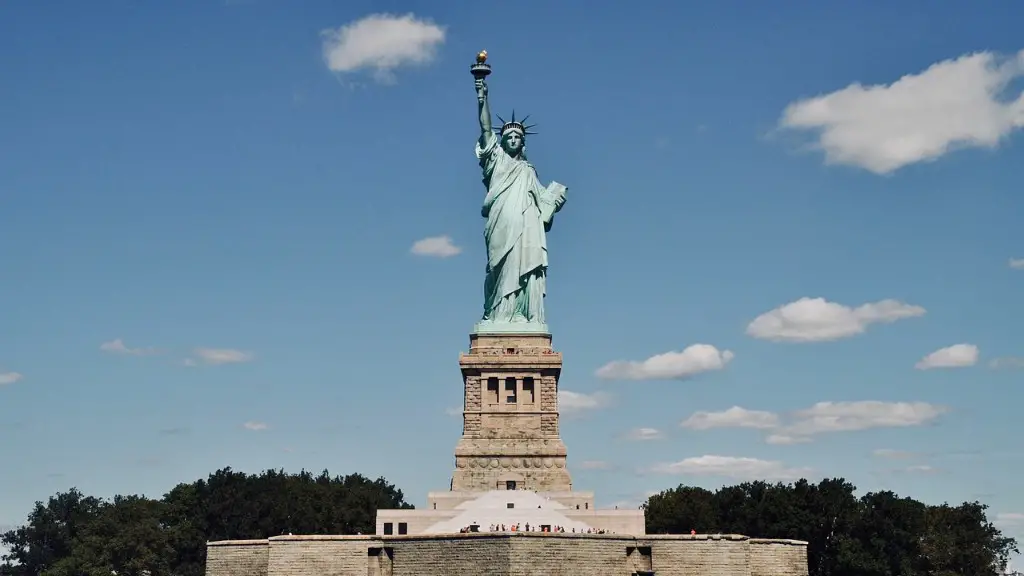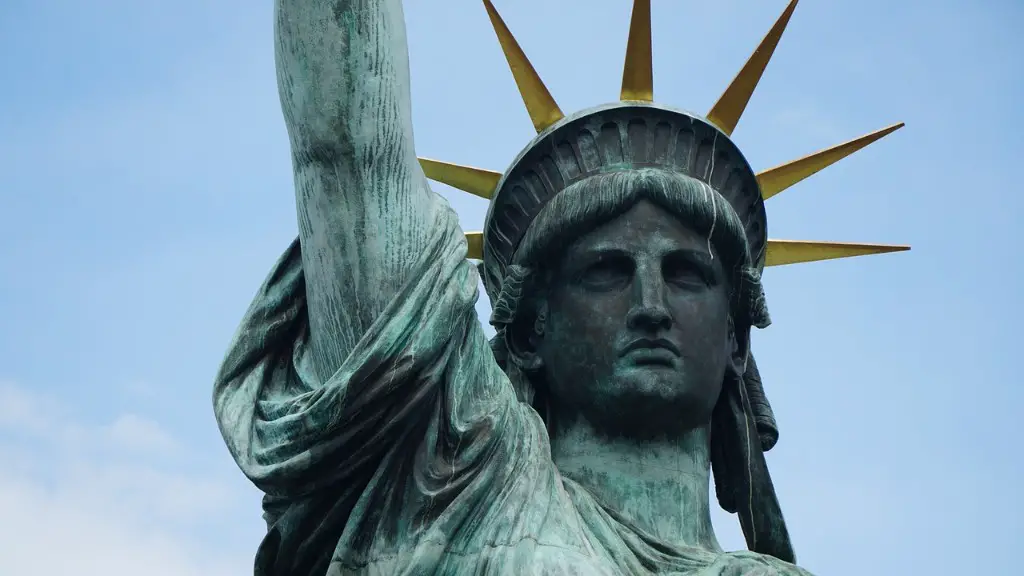The Louvre Museum is located in Paris, France and is renowned as one of the largest art galleries on Earth. The museum holds over 35,000 pieces of art and ancient artifacts, spanning from the Middle Ages to today, making it one of the most diverse and iconic collections in the world. The Louvre is home to some of the world’s most valuable pieces, such as the “Mona Lisa” by Leonardo da Vinci and the “Venus de Milo” by Alexandros of Antioch, dating back to ancient Greece. Despite the large collection, there is more to the Louvre that meets the eye.
Before delving into what’s inside, it is important to note the history of the Louvre. It began as a former palace for King Francis I in 1546, and was officially converted into a museum during the French Revolution in 1793. The museum opened its doors to the public in 1771, and has experienced tremendous growth ever since. Today, the Louvre sits as one of the most visited tourist attractions in the world, accumulating millions of visitors per year.
Aside from the obvious artworks, the Louvre actually has a variety of attractions within its premises. For starters, guests can experience a spectacular glass pyramid that features under the main courtyard of the museum. The pyramid was introduced during the renovations of the museum in 1989 and stands tall among the Baroque-styled exterior of the Louvre.
Moving on to the interior of the museum, visitors can find a diverse array of sections inside dedicated to the different works. For example, the “Sully” wing is home to historical artifacts from the 6th to the 18th centuries, and the “Denon” wing showcases artwork from the Renaissance to the modern day. This includes the statues, paintings and sculptures that the Louvre is known for. Historians and art buffs can also find plenty of galleries dedicated to specific items or even a specific time periods.
On top of the galleries inside the museum, the Louvre also offers its visitors temporary exhibits that showcase newly acquired pieces of art or sculptures from around the world. This is a great opportunity for guests to experience works of art that are not usually open for viewing. The Louvre also provides educational resources to its patrons such as guided tours and audio guides.
The Louvre is also home to its very own arts library, “The Richelieu Wing.” Located on the first floor of the museum, this library offers hundreds of thousands of books and journals related to art and its history. Additionally, the Louvre gets down to the scientific details of their pieces through their lab dedicated to the restoration of broken or deteriorated works. The laboratory is full of experienced staff that analyze and restore these works to their original form.
These features along with its renowned artworks, makes the Louvre Museum a top tourist destination and a must-see for all art enthusiasts. From its historical start to its care for art restoration, the Louvre Museum is without a doubt one of the most unique and iconic attractions in the world.
What is the Richelieu Wing?
The Richelieu Wing is an impressive library located on the first floor of the Louvae Museum. It contains hundreds of thousands of books and journals related to history, art, and culture. Founded in 1983 by the Presidential Commission for National Cultural Heritage, the Richelieu Wing is the official library for the Louvre Museum’s research and educational programs. It has since become the largest library in the museum and a major attraction for visitors.
The Richelieu Wing is home to a rare collection of art and documentary resources. It is divided into 11 divisions and contains over 64,000 books and 7,500 manuscripts. People can find practically anything they need in the library, including catalogues and guidebooks of the museum as well as a vast selection of international literature in various languages. The Richelieu Wing is a great source of information for professionals in the arts and culture, as well as researchers and students.
The French government has recently put the Richelieu Wing under a renovation process to improve its facilities and make the library a more comfortable and inviting space. The renovation will add more room to the library, new equipment, and will have plenty of resources related to new trends and important topics in the art and culture industry. Thanks to the renovation, the Richelieu Wing will remain a valuable resource for professionals and students for years to come.
Overall, the Richelieu Wing is a great place for tourists and art lovers. It is a cornerstone of the Louvre Museum, and it is full of valuable information that people can use to learn about the museum and its collection. The Richelieu Wing will continue to be a great attraction for visitors and art-lovers alike.
The Louvre Museum Restaurants and Shops
In addition to its impressive galleries and collections, the Louvre is home to a handful of restaurants and stores. These establishments are both functional and beautiful, and they serve as great places to take a break after a long day at the museum. There are several different restaurants and stores located in the museum, such as the Louvre Café and the Louvre Shop.
The Louvre Café serves a variety of signature cocktails, homemade sandwiches, and other French specialties. It is a unique place that offers both a fine-dining experience and a place to relax. The Louvre Café also has a great selection of wines and champagnes for visitors to enjoy. It is a great place to grab a bite or unwind after visiting the museum.
The Louvre Shop is a great place to find souvenirs and mementos from your visit. The store sells a variety of items from t-shirts and books to prints of famous paintings. The shop also offers a selection of crafts, jewelry, and other one-of-a-kind items.
In addition to the Louvre Café and Shop, the Louvre Museum also has several gift shops located throughout the museum. These shops offer unique items that you can’t find anywhere else. You can find everything from books and jewelry to art prints and souvenirs.
Finally, there are also two restaurants located inside the museum. Louvre Deschamps is a luxurious fine-dining restaurant that serves classic French cuisine. For a more casual experience, guests can also visit the Café Mollien, located in the Richelieu Wing. Here, guests can find a variety of snacks and light meals.
The Louvre Museum is not just a place to appreciate art, but it is also home to some unique restaurants and shops. Whether you’re looking to grab a tasty lunch or a souvenir to commemorate your visit, the Louvre has something for everyone.
The Arts Library
The Louvre Museum is also home to its very own Arts Library, “The Richelieu Wing.” This library is located on the first floor of the museum and contains hundreds of thousands of books and journals dedicated to art and its history. Founded in 1983 by the Presidential Commission for National Cultural Heritage, the Richelieu Wing is now used for research and educational purposes.
The Richelieu Wing is divided into 11 divisions and is said to contain over 64,000 books and 7,500 manuscripts. Visitors to the library can find practically anything they need about art and its history, including catalogues and guidebooks of the museum as well as a vast selection of international literature in various languages. The library is a great resource for historians, art buffs, and students alike.
The French government recently put the Richelieu Wing under a renovation process to improve its facilities and make the library a more comfortable and inviting space. The renovation will not only allow for more room, new equipment, and improved climate control, but it will also bring the library up to date with the latest trends and topics in the art and culture industry.
The Richelieu Wing is an integral part of the Louvre Museum and it is an essential resource of knowledge. It is a great place to explore and to learn more about the museum and its collection. Plus, its beautiful and elegant design has made it a popular attraction for visitors from all over the world.
The Restoration Laboratory
The Louvre Museum is also home to a state-of-the-art restoration laboratory. This is a unique facility dedicated to the preservation and restoration of artworks and artifacts. The laboratory is staffed by experienced professionals who analyze and restore the pieces to their original form.
The Louvre Restoration Laboratory is equipped with some of the most advanced equipment and is staffed by experts from all around the world. The laboratory is also home to a variety of workshops and classes for aspiring craftspeople. This is a great opportunity for aspiring restorers and artists to learn from the museum’s experts and to hone their craft.
The laboratory also offers conservation treatments and preventive care for the museum’s pieces. This is important for preserving the works for generations to come. Visitors can also take part in lectures and courses about the history and techniques of art restoration.
The Louvre Museum Restoration Laboratory is an invaluable asset to the museum and its visitors. Not only does it preserve and restore the museum’s pieces, but it also allows visitors to learn more about the art of restoration and preservation. The laboratory is a testament to the museum’s commitment to the preservation of art and history.
Overall, the Restoration Laboratory adds a unique experience to the Louvre Museum. Its staff of professionals and modern equipment are assets to the museum and its visitors. It is a great place to learn more about the science of restoration and to be inspired by some of the world’s most valuable pieces.
Conclusion
The Louvre Museum is home to some of the world’s most iconic works of art and ancient artifacts. Despite its grandeur, there is more to the Louvre then meets the eye. The museum offers a variety of attractions for its visitors, including a spectacular glass pyramid, a diverse array of galleries, educational resources, and its own arts library and restoration laboratory. Visitors to the Louvre can experience the museum’s attractions, grab a bite at its restaurants, or even purchase souvenirs from its shop. The Louvre Museum is a must-see destination for art-lovers and tourists alike, and it is an unforgettable experience that nobody should miss.

